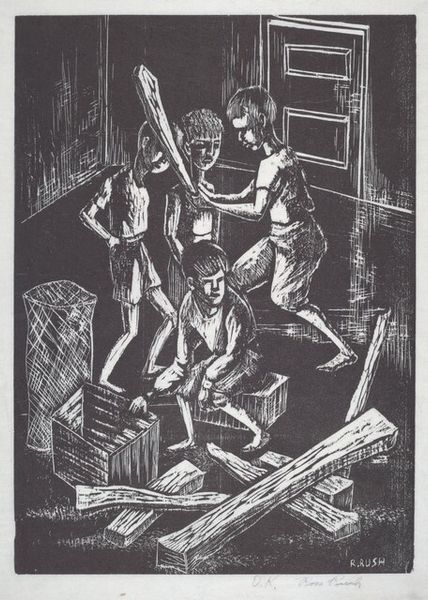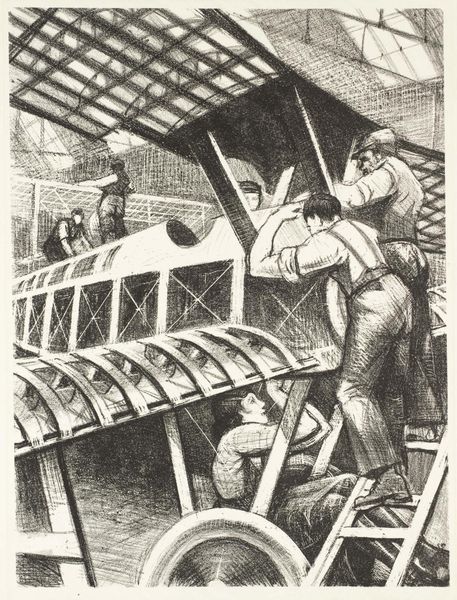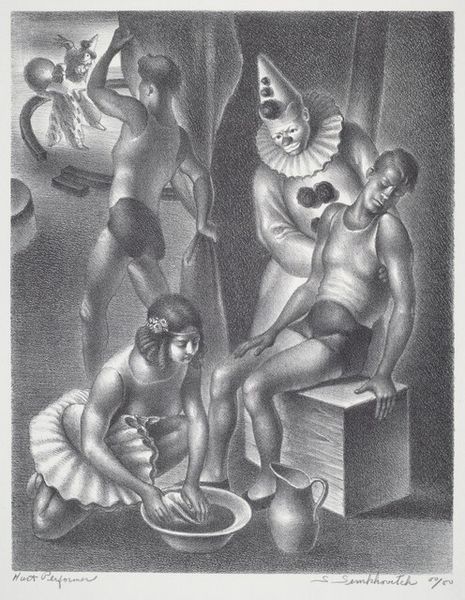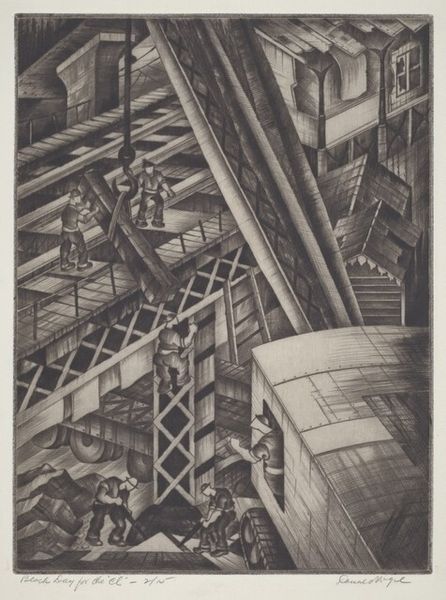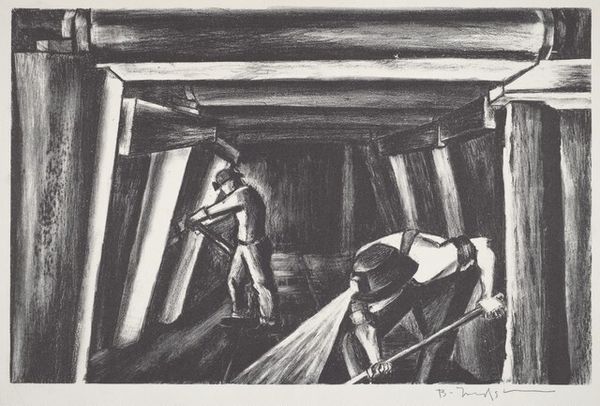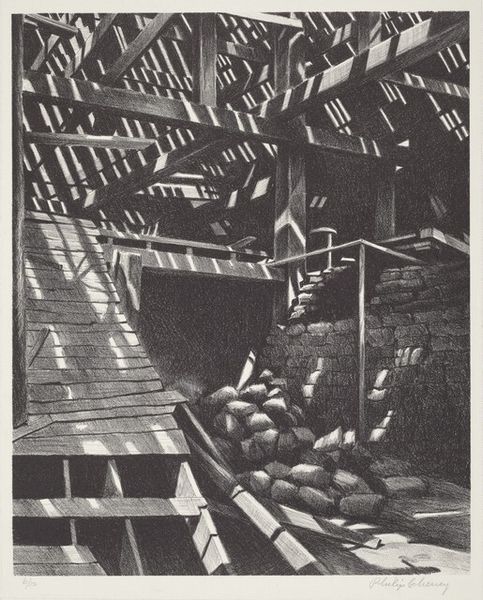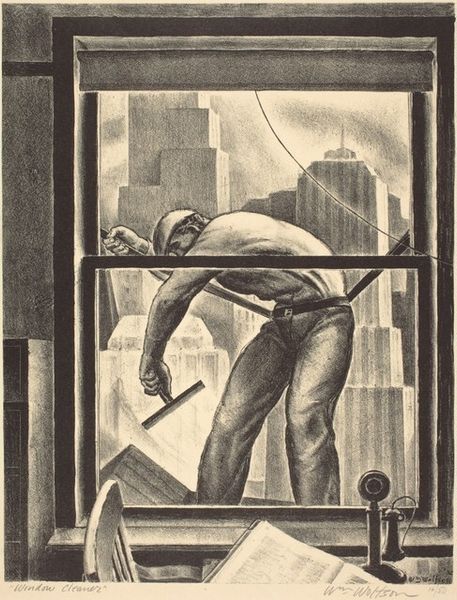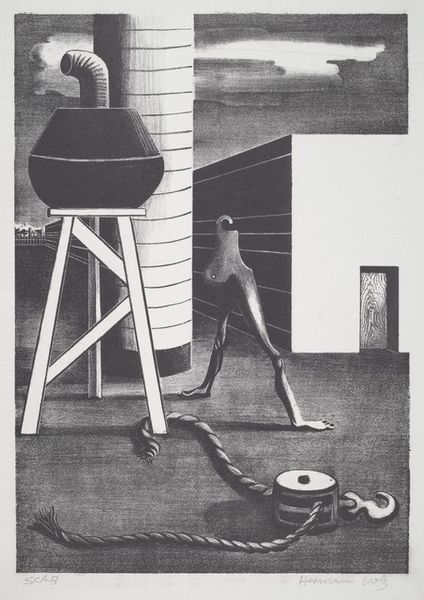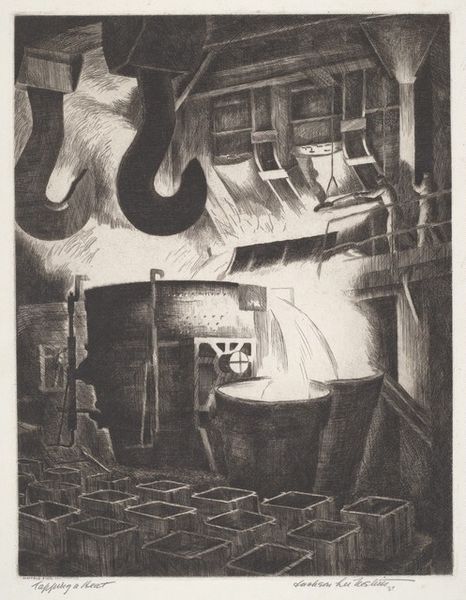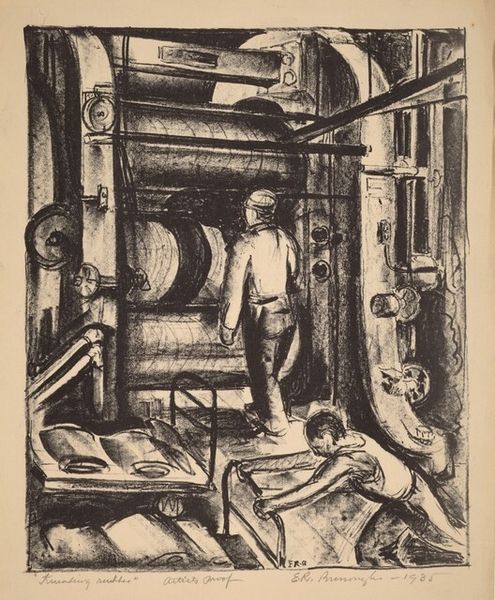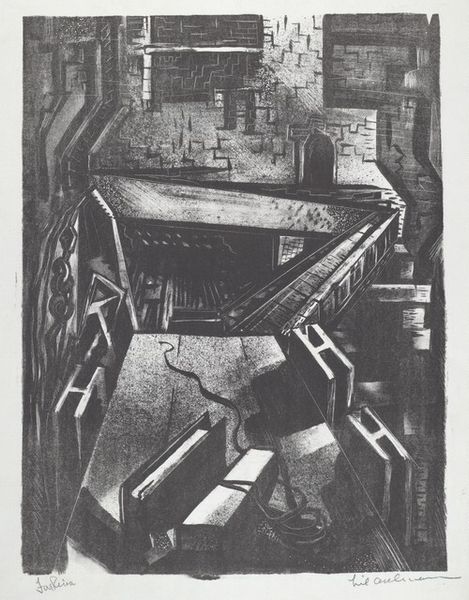
Green Sand Molding - Taylor-Wharton Iron & Steel c. 1935 - 1938
0:00
0:00
drawing, print, charcoal
#
drawing
# print
#
charcoal drawing
#
social-realism
#
pencil drawing
#
surrealism
#
cityscape
#
genre-painting
#
charcoal
#
realism
Dimensions: image: 385 x 300 mm sheet: 535 x 386 mm
Copyright: National Gallery of Art: CC0 1.0
Curator: Minnetta Good’s print, "Green Sand Molding - Taylor-Wharton Iron & Steel," created sometime between 1935 and 1938, offers a stark, almost imposing view into an industrial process. The texture alone grabs you—it feels weighty, substantial. Editor: Yes, there’s an immediate gravitas in Good's use of chiaroscuro. The interplay of light and shadow almost abstracts the forms, doesn’t it? Shapes feel monumental and strangely forbidding. Curator: The choice of charcoal underscores the grit and labor of the depicted scene. Good, active in social realist circles, was documenting, really, the physical labor involved at Taylor-Wharton. The print medium allowed for wider dissemination, too, broadening the work's accessibility. Editor: That makes me consider the composition carefully: The diagonal lines of the machinery lead our eye toward the unseen source of the "green sand," dwarfing the workers. Even the limited tonal range becomes expressive—an almost symbolic rendering of industrial monotony. Curator: I think focusing on her technique, that choice to emphasize weight and volume... the very material process mirrors the labor being represented. It's as though the production of the artwork becomes a parallel to the production within the steel factory itself. Editor: You're right, the materiality serves more than a representational purpose; the rough charcoal mimics the tactile reality of the factory environment. We can almost feel the particles suspended in the air, can't we? Curator: Good's focus gives dignity to these workers and also prompts reflection about industry's impact in America in the interwar era. It is more than a cityscape; it’s a document of labor history. Editor: Absolutely. By using form so adeptly, Good has also built an impactful comment about those very things: place, process, and experience. It transcends straightforward documentation and enters a poetic interpretation of an age. Curator: Indeed. Seeing "Green Sand Molding" through the lens of production offers a new understanding. It prompts questions about materiality, social structures, and the intersection of art and industry. Editor: For me, I’ll take with me Good's skillful mastery of form. A quiet testament to its capacity for mood, weight, and emotion when guided by an expert hand.
Comments
No comments
Be the first to comment and join the conversation on the ultimate creative platform.
